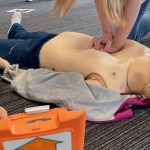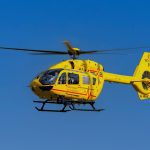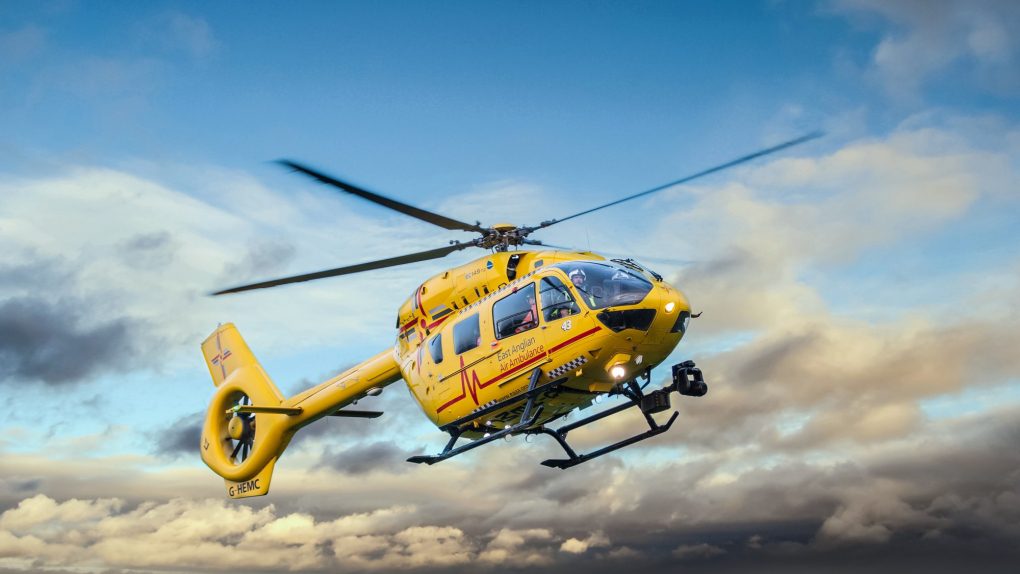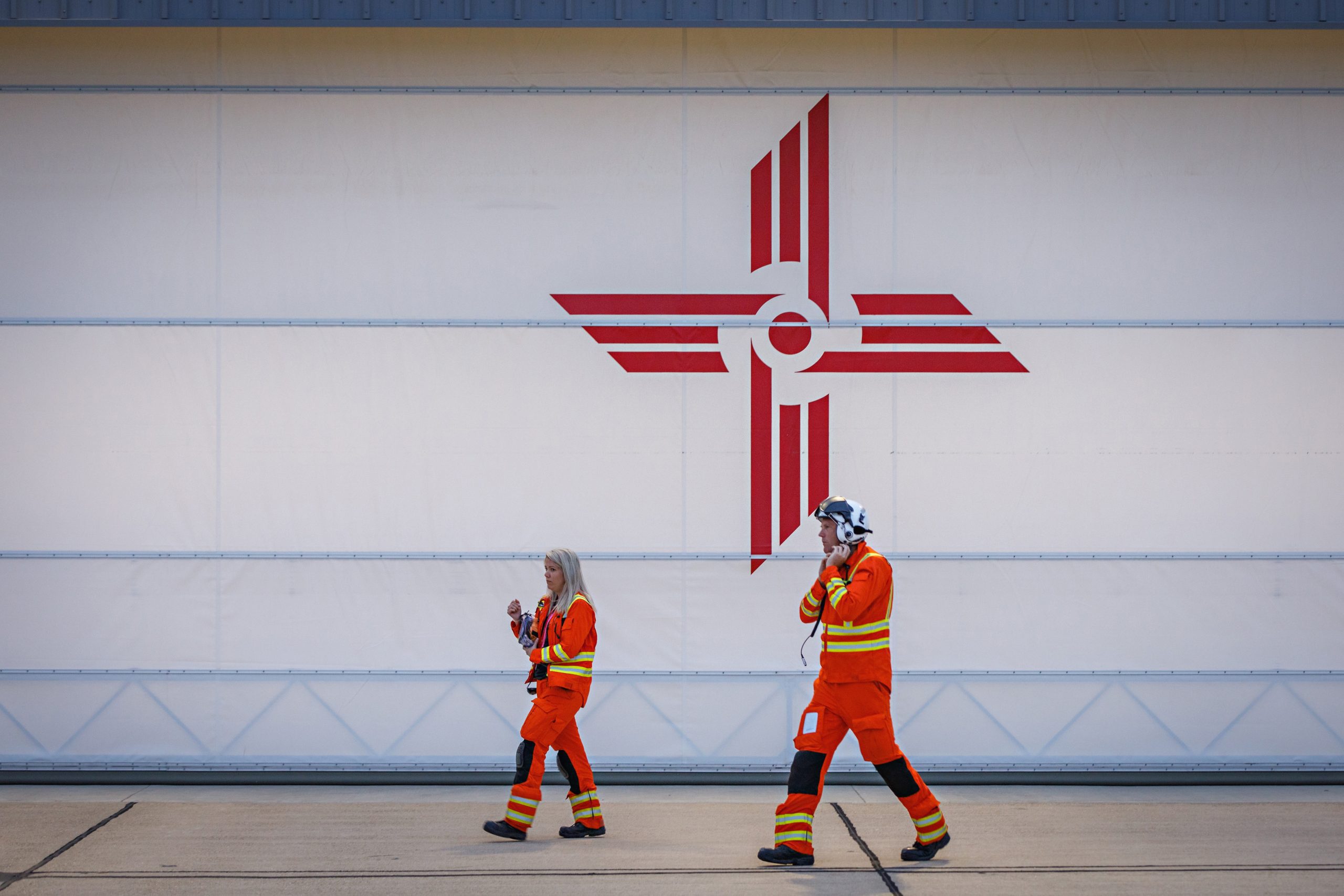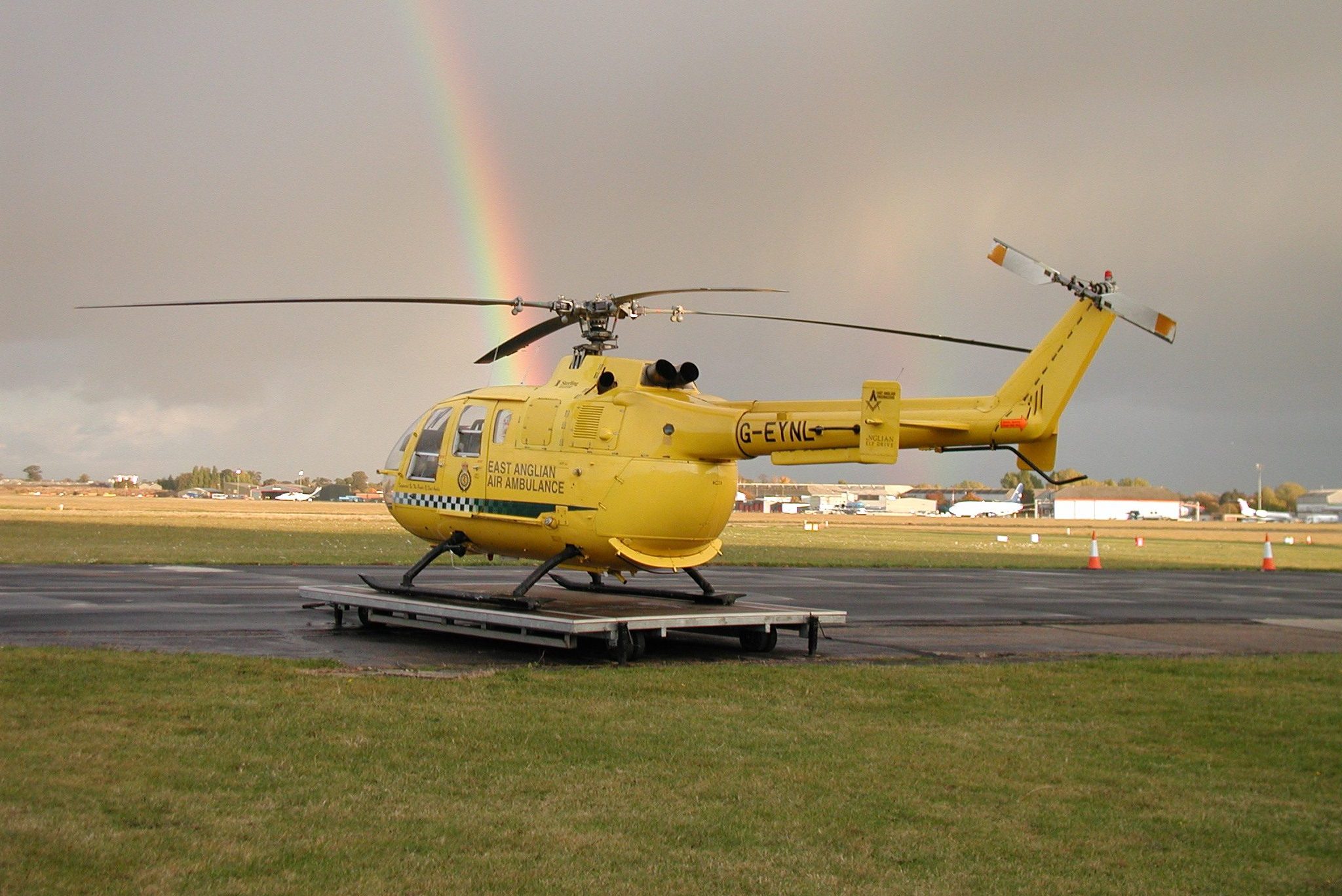2 Apr 2025
G-HEMC’s ten years of service
On 2 April 2025, G-HEMC will mark ten years of service with East Anglian Air Ambulance (EAAA), and ten years since it became the first H145 helicopter in the UK to fly Helicopter Emergency Medical Service (HEMS) taskings. During this time, G-HEMC has been tasked 7,928 times, with pilots flying the charity’s clinical team to the sides of 5,193 patients in need of urgent critical care. As we mark this milestone, we’re taking a moment to look back on the last decade of G-HEMC’s service and the aircraft’s impact in your community.
Improved operational capabilities and care for patients
Prior to G-HEMC, EAAA flew an EC135 helicopter. The transition to an H145 in April 2015 aligned with the charity’s developments and ambitions; the H145 greatly improved our operational capacities, particularly from EAAA’s Cambridge operational base where G-HEMC was to spend much of the following decade as EAAA’s Anglia Two helicopter. Flown by two pilots, G-HEMC had increased payload (the total weight it can carry), better range, increased cabin size and better handling, G-HEMC really was a step forward in our service and care for patients.
The H145 provided increased cabin size for the doctor and the critical care paramedic to monitor and give the patient the best treatment and care possible during an air transfer to hospital. There was also the option to fly with a third seat, which meant G-HEMC could carry an extra clinician or even, on some occasions, the next of kin if the patient was a young child.

While we all had very fond memories of the previous aircraft, G-HEMC gave the clinical team extra capacity for equipment and clinicians. While this meant there was a front crew and a rear crew in the H145, we worked as a team to prioritise patient care.

— Consultant Paramedic and Head of Clinical Services, CCP Neil
The top speed of G-HEMC is 140knots, over 160mph, meaning the aircraft can get a clinical crew directly to the scene of life-threatening medical emergencies in the fastest possible time, across Cambridgeshire and Bedfordshire. While these were, and still are, the usual core counties covered by the Anglia Two (Cambridge) crew, G-HEMC’s flying time of around two and a half hours meant it could fly to other counties, provide cover from EAAA’s Norwich base from time to time, and had other benefits, as Alan Ward, EAAA’s Aviation Advisor, explains,
“G-HEMC’s increased range gave us more ability, which could improve outcomes for patients. If the aircraft was flying nights from Norwich, for example, the increased range and payload means that the crew could fly from Norwich to Addenbrooke’s Hospital in Cambridge and be re-tasked, without having to stop to refuel because of the extra fuel the H145 was able to carry.”
G-HEMC’s first task
Captain Andy, from Babcock International (Babcock), who still flies for EAAA today, was one of the pilots for G-HEMC’s first HEMS tasking on 2 April 2015. He was being trained as a Cambridge base captain at the time, and – coincidently it was also one of his first ever days of HEMS line training.
Captain Andy recalls that the red phone rang at around 8:55am with a tasking just outside of our core counties of operation, just north of Watford. He describes it as a whirlwind of emotions with concentration levels “through the roof.”
“It took 23 minutes to get there including take off, recce and landing,” Captain Andy explains. “I remember it being incredibly busy as we all adjusted to multi-pilot operations, which were new at EAAA.”
Captain Andy and his training captain negotiated G-HEMC through busy airspace enroute to the incident. He remembers unloading the stretcher at scene as the crew needed to convey the patient by air to the Royal London Hospital in Whitechapel. The helipad is on the roof of the Royal London with incredible views over the capital.
“Once we had landed and the patient was handed over, we caught our breath. My training captain looked at me and simply said, “Welcome to HEMS!”
As Captain Andy reflects on a decade of flying G-HEMC to medical emergencies across the region, he says,
“The H145 is the ideal platform for HEMS. The aircraft is powerful, with reliable engines combined with responsive handling. The aircraft size and dimensions mean most landing sites are available, and the avionics suite ensures pilot workload is managed effectively through a four-axis autopilot and modern satellite navigation system. Fuel load and consumption allow us to carry, on average, over two hours’ worth of fuel. This means we can cover a huge area before we need to refuel.”
Types of incidents
Since that very first task, G-HEMC has attended 3,027 medical taskings (38%), 2,044 road traffic collisions (26%), 1157 accidental injuries (15%), 1,700 (21%) were other medical emergencies, including sports and leisure injuries, equestrian incidents, and assaults.
G-HEMC’s three most visited towns are Luton, Bury St Edmunds and Ipswich. As well as flying to patients across East Anglia, G-HEMC continues to occasionally attend incidents outside of the region, if other air ambulance charities have already been tasked to a different incident. The furthest away tasking was in northern Kent, resulting in transfer of a patient to a London Hospital. The busiest days during the last ten years for G-HEMC included ten taskings; this has happened on four separate occasions. The average busiest time for G-HEMC is between 3pm and 5pm.
Milestone moments
July 2015 saw the then Duke of Cambridge, Prince William, complete his first shift as an EAAA pilot. Flying out of the Cambridge base, His Royal Highness flew G-HEMC to the scene of countless medical emergencies during his two years of service with the charity.
In 2023, G-HEMC received a D3 five-blade upgrade to its rotor head. This generates more lift and increases payload, reduces vibrations and improves handling and stability, providing improved comfort for EAAA’s patients and crew.
G-HEMC has also featured in national television programmes, including Channel 4’s Emergency Helicopter Medics, which has highlighted the work of EAAA and other air ambulance charities.

Looking to the future
Ten years isn’t especially long in the lifespan of a helicopter – typically helicopters could fly for 30 years. Both G-HEMC and her EAAA sister, G-RESU, are maintained to the highest of standards by Babcock, our aviation partner, and are subject to regular maintenance for upkeep and safety. We always consider possible modifications and understand the cost and benefits of these.
Alan Ward adds, “While we’re very happy with G-HEMC and the H145, we’re never complacent; we always look to the horizon to see what’s new in terms of the latest innovations and technology and how these could benefit the patients we attend.”
It also greatly depends on innovations in medical offerings and equipment, and how these can be integrated effectively working out how we can integrate into aircraft.
“As an example,” Alan explains, “if CT scanners were miniaturised in the future, then there may be more potential for crews to provide treatment and care to people who have suffered a stroke much more quickly and, crucially, within in ‘the golden hour.”
The H145 is a popular platform, and there are hundreds in service across the world, both in the military and HEMS.
Alan adds, “G-HEMC continues to serve us well and has done throughout its ten years of service with EAAA.”
Captain Andy adds, “I have been so fortunate to see the difference this aircraft makes to people’s lives. When you combine this tech with the incredible, highly skilled and devoted team onboard, it truly is an impressive combination.”
Happy ten years, G-HEMC. Thank you for your continued service.


